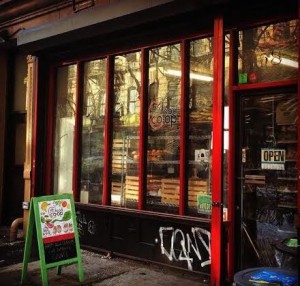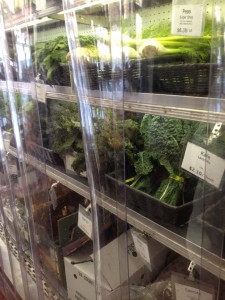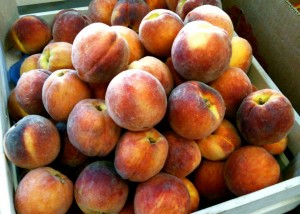Food Cooperatives
A Community for Alternative Food Methods
Many New Yorkers buy their groceries from impersonal supermarkets and eat food that travels hundreds of miles to their plates. Yet a burgeoning number of people are interested in taking back the economic power of food sales and supporting local community businesses. Working alongside other initiatives that support alternative food production and consumption, such as farmers’ markets and community-supported agriculture (CSA), food cooperatives provide people with an opportunity to shop for locally grown food while investing in their own neighborhood.
Progressive Thoughts on Food Consumption
4th Street Food Co-op, New York, NY.
New York food cooperatives provide consumers with options for shopping for alternative foods in a community-centered atmosphere. Whereas supermarkets focus on economic profits, food cooperatives are typically interested in providing a neighborhood with the chance to create a community. They work with other local businesses, protect people from monopoly overcharges, and make locally produced foods available. Specifically, some food cooperatives aim to provide wholesome options to people who live in food deserts, where grocery stores are sparse or nonexistent.
One example of a community-based food cooperative is 4th Street Food Co-op (4SFC), located in the East Village. 4SFC provides local, sustainable, fair trade, and organic products to its members and customers, while maintaining a storefront that is staffed entirely by working members.
“Food for People, Not for Profit”
“What’s to love about Food Co-ops?,” https://www.youtube.com/watch?v=BpG8wzx1qO0, August 6, 2012, video by CoopsStrongerTogether.
Although the earliest food cooperatives were established during the Great Depression, they also proliferated during the counterculture movement of the 1960s. During that time, the United States began to envision changing the world through collective, non-corporate approaches. The idea of “People Power,” as well as an interest in disassembling capitalism, led to the growth of food cooperatives and an appreciation of locally grown food products.
What sets food cooperatives apart from their larger grocery store competitors is how they are owned and operated. Food cooperatives are collectively owned by their members, who contribute both their time and their money. Those who join usually purchase a share in the cooperative, paid in either a lump sum or a payment plan. In addition, working members are required to work a certain number of hours each week or month. However, most cooperatives, including 4SFC, allow non-working memberships for a slightly higher fee.
For a working member at 4SFC, a typical shift includes anything from receiving deliveries, ringing up customers, and restocking shelves to routine maintenance and upkeep of the store. Food cooperatives also often offer incentives for their members. For example, although 4SFC is open to the public as well as members, working members receive a 20 percent discount on their purchases.
Food for All
Products at 4th Street Food Co-op, New York, NY.
Because food cooperatives are collectively owned and managed, they run on the principle of participatory democracy—members partake in the collective decision making of all aspects of the business. The 4th Street Food Co-op runs on this very concept, which has allowed them to successfully create a small community of otherwise diverse individuals centered on healthy eating principles.
By providing both access to alternative food methods and an environment to participate in a collective enterprise, food cooperatives are slowly changing the way food moves from farm to consumers.
The Daily Struggles of Alternative Methods
Although food cooperatives operate on progressive principles regarding food consumption, they do have their problems. Internal struggles, such as conflicts over management concerns and members’ duties, are among the most serious issues they face.
Another struggle that affects food cooperatives is creating a sense of community. They are typically made up of paying, working members, but most members tend to do only as much as their shift entails, so member involvement must be increased in order to construct a genuine community of individuals who want to create better access to alternative foods.
Despite the problems they face, food cooperatives continue to provide neighborhoods, especially in NYC, with an unconventional means of buying food. In a city where the concept of community has begun to lose meaning, these organizations offer people a chance to rebuild relationships centered on alternative food consumption. -E.R.







